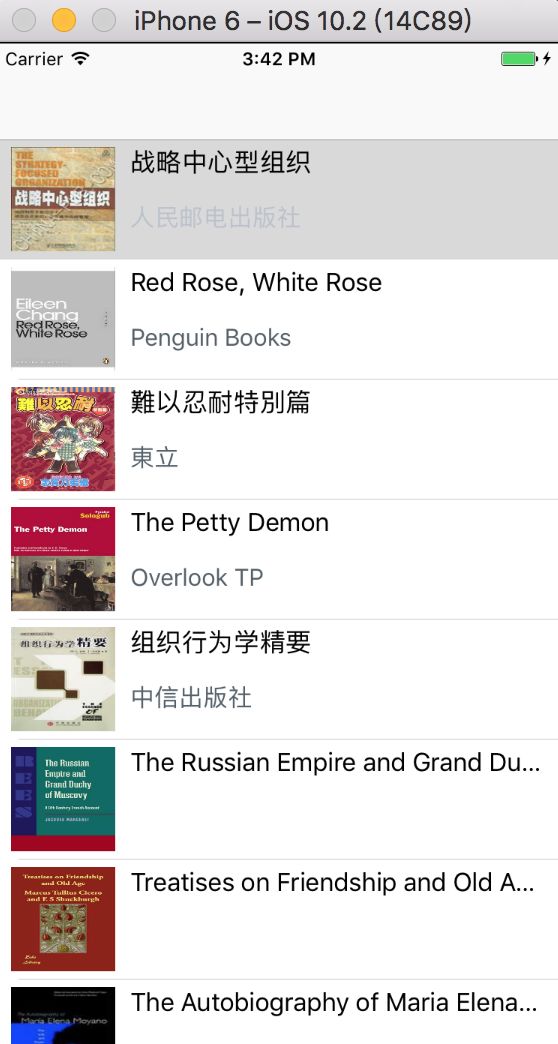一、简单说明
.
1 . 什么是FMDB
FMDB是iOS平台的SQLite数据库框架
FMDB以OC的方式封装了SQLite的C语言API
2 . FMDB的优点
使用起来更加面向对象,省去了很多麻烦、冗余的C语言代码
对比苹果自带的Core Data框架,更加轻量级和灵活
提供了多线程安全的数据库操作方法,有效地防止数据混乱
3 .FMDB的github地址
https://github.com/ccgus/fmdb
二、关于数据库的增删改查
.
在FMDB中,除查询以外的所有操作,都称为“更新”
create、drop、insert、update、delete等
1 .使用executeUpdate:方法执行更新
- (BOOL)executeUpdate:(NSString*)sql, ...
- (BOOL)executeUpdateWithFormat:(NSString*)format, ...
- (BOOL)executeUpdate:(NSString*)sql withArgumentsInArray:(NSArray *)arguments
2 .查询方法
- (FMResultSet *)executeQuery:(NSString*)sql, ...
- (FMResultSet *)executeQueryWithFormat:(NSString*)format, ...
- (FMResultSet *)executeQuery:(NSString *)sql withArgumentsInArray:(NSArray *)arguments
三、关于使用
.
1 . 什么场景下使用
为了提升用户体验,一般在断网环境下读取数据库存取的数据,不至于让你的App一片空白。当然,这个前提是你已经在用网的环境下缓存了信息到数据库。除此外使用最多的比如聊天记录的存储。
2 .与文件存储相比的优点
个人觉得文件存储太多会太乱,数据库便于管理,当然这个是根据大家自己的App的实际情况来定的。
3 .怎么使用
在工程中导入FMDB,当然在使用FMDB的时候记得导入libsqlite3.0.dylib。
4 .为什么不用CoreData
这个具体项目而定,数据同时存储量、读取量不大,表间关系简单的话推荐FMDB
附:以下是sqlite常用到的语句
注:一定要注意表中插入数据(字符串是' ',整数不加' ')
1 .创建表
create table if not exists 表名
(
字段名 类型(字符个数,可以省略) primary key autoincrement,
字段名 类型(字符个数,可以省略) null(可以省略),
字段名 类型(字符个数,可以省略) not null(可以省略),
字段名 类型(字符个数,可以省略) not null(可以省略)
);
注意类型有integer,text,blob,boolean,varchar等
例如:
create table if not exists Book
(
id integer primary key autoincrement,
name text,
url text,
des text
);
2 .表中插入数据(字符串是'',整数不加'')
insert into 表名 (字段名,字段名,字段名) values ('','','');
例如
insert into Book (name,url,des) values ('霍金全集','www.baidu.com','描述');
3 .查询 where条件判断 order by 排序
select 字段名(*代表所有字段,如果有多个字段用英文的,分割) from 表名字 where 字段名=‘’ order by 字段名 desc|asc;
注意:
1,where判断,对于integer:> , >= ,< , <=, =,between 字段 and 字段 等
2,desc降序 asc升序
例如:
(1)查询表中所有字段数据
select * from Book;
select name,url from Book;
(2)查询判断的条件
select * from Book where 字段名='';
(3)select name,url from Book where name = '钢铁是怎么炼成的'
4 .模糊查询
select 字段名 from 表名 where 字段名 like '%关键字%';
例如
select * from Book where name like '%钢铁%';
5 .IN查询(或者)
select 字段名 from 表名 where 字段名 in ('关键字','关键字');
例如:
select * from Book where name in ('我的青春','钢铁是怎么炼成的');
6 .更新
update 表名 set 字段名 = '关键字' where 字段名 = 关键字
例如:
update Book set url='www.aaa.com' where id = 2
7 .删除数据
(1) 删除指定数据
delete from 表名 where 字段名 = '关键字';
例如:
delete from Book where name = '霍金全集';
(2) 删除整张表里面的所有数据
delete from 表名
8 .删除整张表
drop table 表名;
9 .添加字段
alter table 表名 add column 字段名 类型;
例如:
alter table Book add column price integer;
10 .求和
select sum(字段名) from 表名
例如:
select sum(age) from User
11 .求平均值
select avg(字段名) from 表名
例如:
select avg(age) from User
12 .求最大值
select max(字段名) from 表名
例如:
select max(age) from User
13 .求最小值
select min(字段名) from 表名
例如:
select min(age) from User
14 .求元组个数
select count(*) from 表名
select count(distinct|all 字段名) from 表名
如果指定DISTINCT短语,则表示在计算时要取消指定列中的重复值。如果不指定DISTINCT短语或指定ALL短语(ALL为缺省值),则表示不取消重复值。
例如:
select count(*) from User
select count(distinct name) from User;
简单的封装FMDB示例,有用就请喜欢哦~
DEMO地址:https://github.com/yongliangP/YLFMDBDemo
